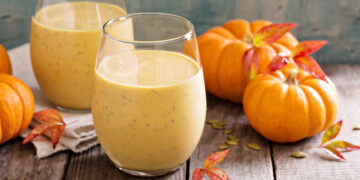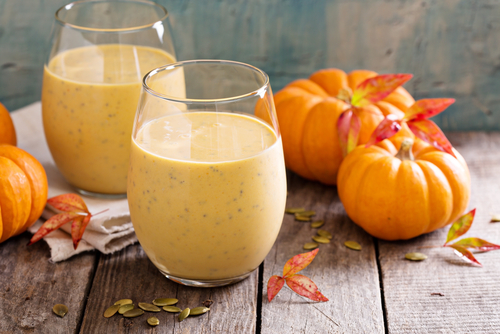Sip with the Seasons
There’s something quietly joyful about blending a handful of fresh fruit and greens into something smooth, cold, and nourishing. A good smoothie feels like a celebration—of what’s ripe, what’s close, what’s growing right now. On the farm, smoothies were never about frozen packs from the store. They were what we made from extra berries, overripe peaches, or a surplus of spinach that needed using. They followed the rhythm of the field, shifting in color and flavor as the year moved on. When you blend with the seasons, each sip becomes a reflection of the land’s generosity—and a simple way to care for your body and the earth.
Why Seasonal Smoothies Make Sense
Fruits and vegetables harvested in their natural season tend to be more flavorful, nutrient-dense, and affordable. Strawberries in spring taste like sunshine. Melons in summer are impossibly sweet. Fall apples are crisp and complex, and winter citrus brings a welcome brightness. By adjusting your smoothie ingredients throughout the year, you not only support local growers—you also keep your palate inspired and your body in tune with nature’s cycle.
Spring: Fresh, Bright & Cleansing
After winter’s heavier meals, spring smoothies should feel like a breath of fresh air—crisp greens, light fruits, and hydrating bases.
Spring Green Smoothie
-
1 cup spinach or baby kale
-
½ cup cucumber, chopped
-
1 small green apple, sliced
-
Juice of ½ lemon
-
½ banana (for creaminess)
-
1 cup water or coconut water
-
Optional: fresh mint leaves
Benefits: detoxifying greens, hydrating cucumber, vitamin C boost.
Strawberry-Rhubarb Smoothie
-
1 cup fresh strawberries
-
½ cup chopped rhubarb, stewed and cooled
-
½ banana
-
1 cup almond milk
-
1–2 tsp maple syrup, if needed
Bright and tangy with just enough sweetness—spring in a glass.
Summer: Juicy, Colorful & Cooling
When the sun is high and the markets are bursting, summer smoothies are all about hydration, antioxidants, and naturally sweet fruit.
Peach & Basil Smoothie
-
2 ripe peaches, peeled and sliced
-
1 frozen banana
-
4–5 fresh basil leaves
-
1 cup unsweetened yogurt or oat milk
-
Optional: chia seeds for texture
Fresh herbs add a surprising, fragrant twist to sweet stone fruit.
Berry-Melon Smoothie
-
1 cup watermelon cubes
-
½ cup blueberries or raspberries
-
Juice of ½ lime
-
A few ice cubes
-
Optional: pinch of sea salt
Hydrating and refreshing—ideal for hot mornings or post-workout fuel.
Fall: Cozy, Spiced & Nourishing
As the air cools, smoothies take on deeper flavors—apples, pears, squashes, and warming spices.
Apple Pie Smoothie
-
1 crisp apple, chopped
-
½ frozen banana
-
½ tsp cinnamon
-
Dash of nutmeg
-
1 tbsp almond butter
-
1 cup oat milk
Tastes like dessert, but packed with fiber and healthy fats.
Pumpkin Spice Smoothie
-
½ cup roasted pumpkin or canned purée
-
1 banana
-
½ tsp pumpkin pie spice
-
1 tbsp maple syrup
-
1 cup unsweetened almond milk
-
Optional: Greek yogurt for added protein
A perfect way to use leftover pumpkin and satisfy that seasonal craving.
Winter: Bright, Immune-Boosting & Comforting
Winter produce brings citrus, hardy greens, and frozen summer fruit from your freezer stash. Smoothies become tools for warmth and wellness.
Citrus-Ginger Smoothie
-
1 orange, peeled and segmented
-
½ grapefruit
-
1 tsp fresh grated ginger
-
½ frozen banana
-
½ cup carrot juice or water
-
Optional: turmeric or a pinch of cayenne
Packed with immune-boosting vitamin C and anti-inflammatory ingredients.
Spiced Pear Smoothie
-
1 ripe pear, chopped
-
¼ avocado (for creaminess)
-
½ tsp cinnamon
-
1 cup unsweetened milk of choice
-
Optional: protein powder or flaxseeds
Creamy, subtly sweet, and warming from the inside out.
Ad Banner #1
— Placeholder for your first ad —
Tips for Building a Seasonal Smoothie Routine
-
Freeze in Bulk: When produce is cheap and abundant—berries in summer, peaches in late August, greens in spring—freeze portions for winter use.
-
Balance Flavor & Nutrition: Combine fruit with a fat (like avocado, yogurt, or nut butter) and a fiber or protein source to stay full longer.
-
Use What You Have: A smoothie is forgiving. Wilted greens, slightly overripe fruit, leftover roasted squash—they all belong in the blender.
-
Sweeten Naturally: Taste before adding sweeteners. Often, ripe fruit is sweet enough on its own.
Ad Banner #2
— Placeholder for your second ad —
Why This Matters
Seasonal smoothies reduce food waste, cut food costs, and celebrate what’s growing now. They keep us rooted in place and time, whether it’s a handful of spring greens or a spoonful of summer berries you froze yourself. Blending what’s fresh isn’t just healthy—it’s intentional. It’s a way of listening to the land, one glass at a time.
Raise Your Glass to the Season
Let your blender follow the rhythms of the garden. Keep things simple, keep them fresh, and let your smoothies change with the weather. Each season brings new colors, flavors, and nutrients—your glass is just the canvas.



























